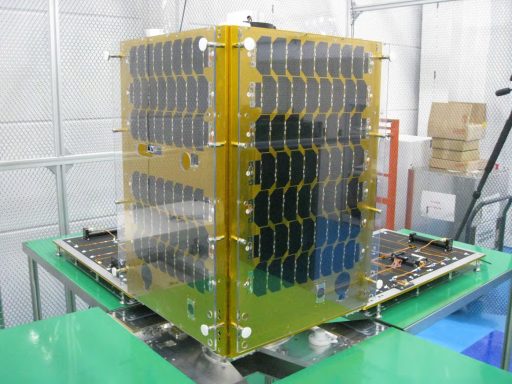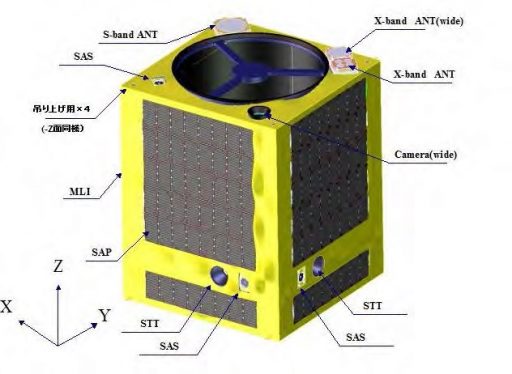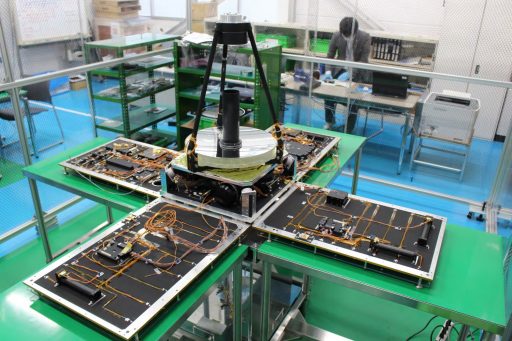CE-SAT 1

CE-SAT 1 (Canon Electric Satellite 1) is an experiment satellite developed at Canon Electronics Space Technology Laboratory to create a high-resolution Earth-imaging system by combining a Cassegrain telescope with a conventional Canon image sensor found in the firm’s EOS product line.
The CS-SAT-1 spacecraft has a launch mass around 60 Kilograms and is 50 x 50 x 85 centimeters in size to facilitate the sizeable telescope. The craft uses body-mounted solar cells and a three-axis stabilization system with accurate pointing capability as required by the imaging payload. Attitude determination uses Solar Aspect Sensors and Star Trackers plus an inertial platform and actuation employs reaction wheels and magnetic torquers.

The satellite’s Earth-facing deck hosts the main telescope aperture, a wide-angle camera, an S-Band antenna for command uplink and telemetry downlink, and a pair of X-Band antenna (narrow and wide beam) for downlink of image data.
The CE-SAT 1 telescope has an aperture of 40 centimeters and uses a Cassegrain-type design with a concave M1 primary mirror and an on-axis convex M2 mirror that focuses the light onto the Focal Plane Assembly. The telescope has a focal length of 3720 millimeters.
CE-SAT 1 hosts a slightly modified EOS 5D camera detector with 5760 x 3840 pixels, capable of imaging a ground area of 6 by 4 Kilometers at a resolution of around one meter.
Canon announced its intent to enter the small satellite business in 2014 using their expertise in camera technology to offer small Earth-imaging satellites at low cost with high-resolution imaging capability. The spacecraft platform is using the AxelSpace Hodoyoshi-1 satellite as a basis, taking a number of flight-proven technologies for power generation, attitude control and communications.

The Hodoyoshi project has demonstrated a number of systems such as high-speed X-Band communications, accurate attitude control and Hydrogen Peroxide-based propulsion for orbit control. According to documentation from 2014, CE-SAT 1 was baselined for a 94kbps S-Band system for command uplink and a 2Mbps X-band terminal for data downlink.
In addition to its imaging system, CE-SAT-1 also hosts a Magnetic Plasma Deorbit System which employs the satellite’s magnetic torquers to generate a magnetic moment that interacts with the ram plasma flow to create a plasma drag force. This type of system is of particular interest as it uses an existing onboard component and does not require the addition of other elements like drag brakes or propulsion systems to accelerate a satellite’s orbital decay.
The total project cost for the prototype satellite is given as $10 million.
